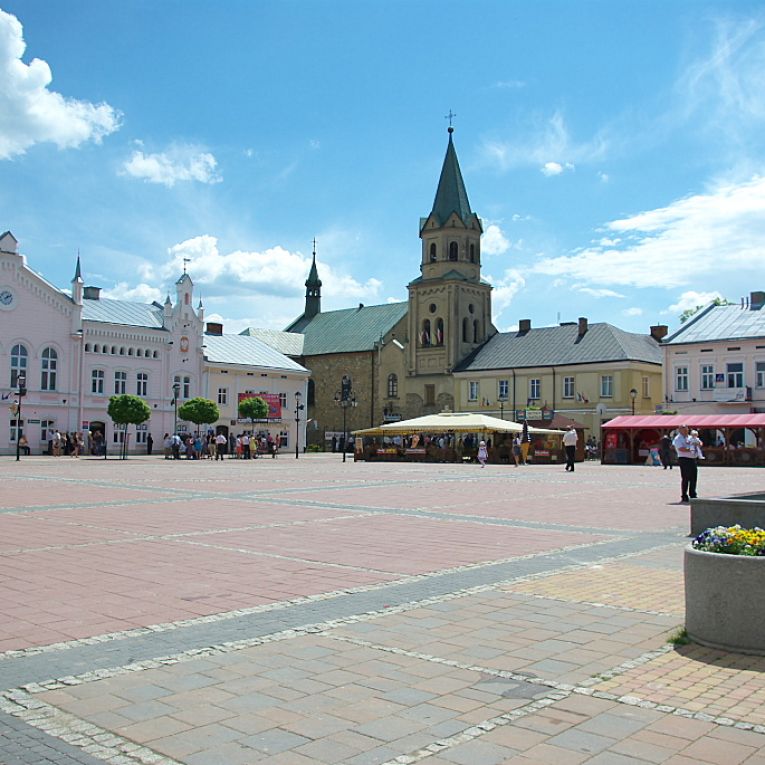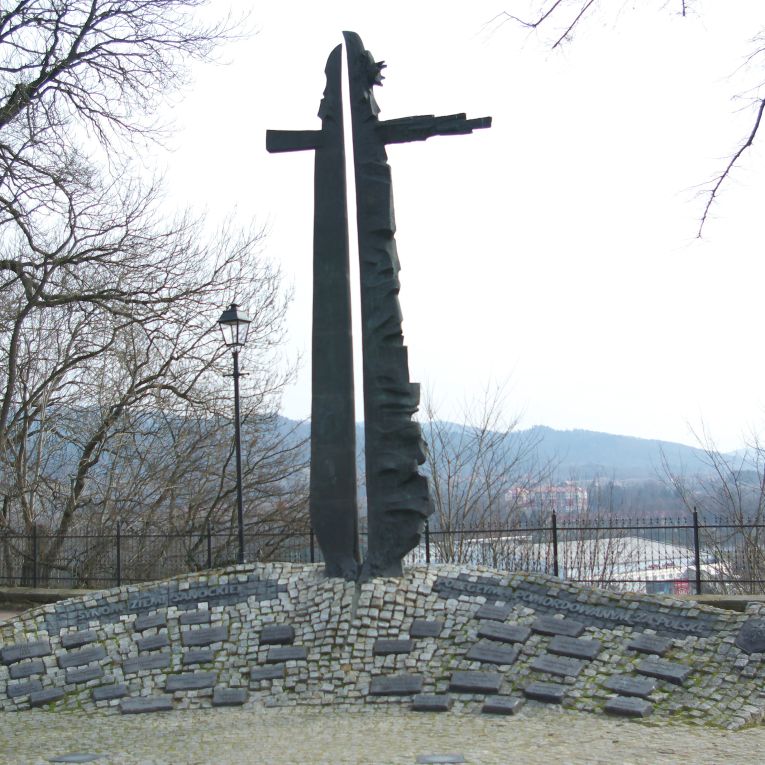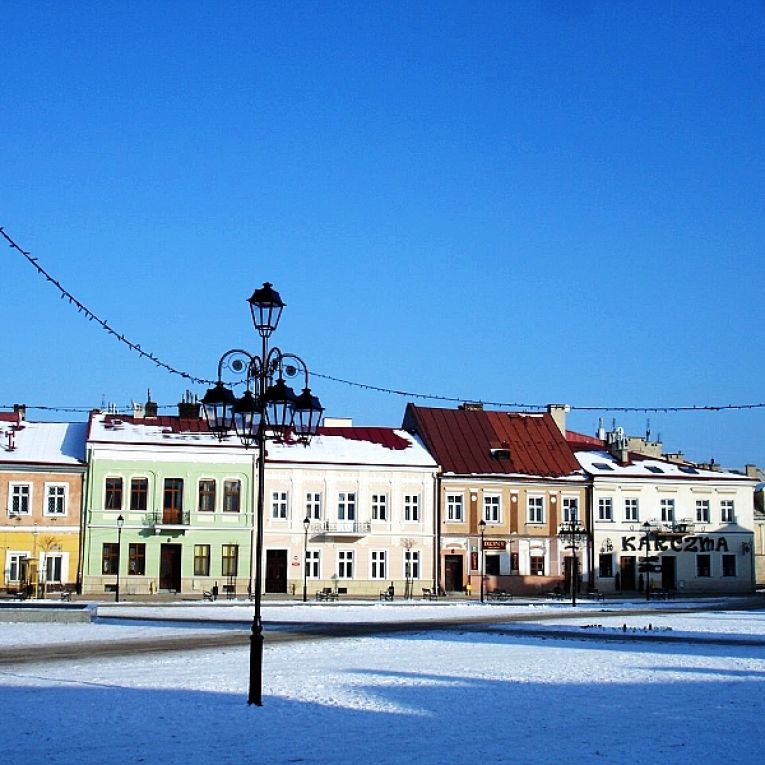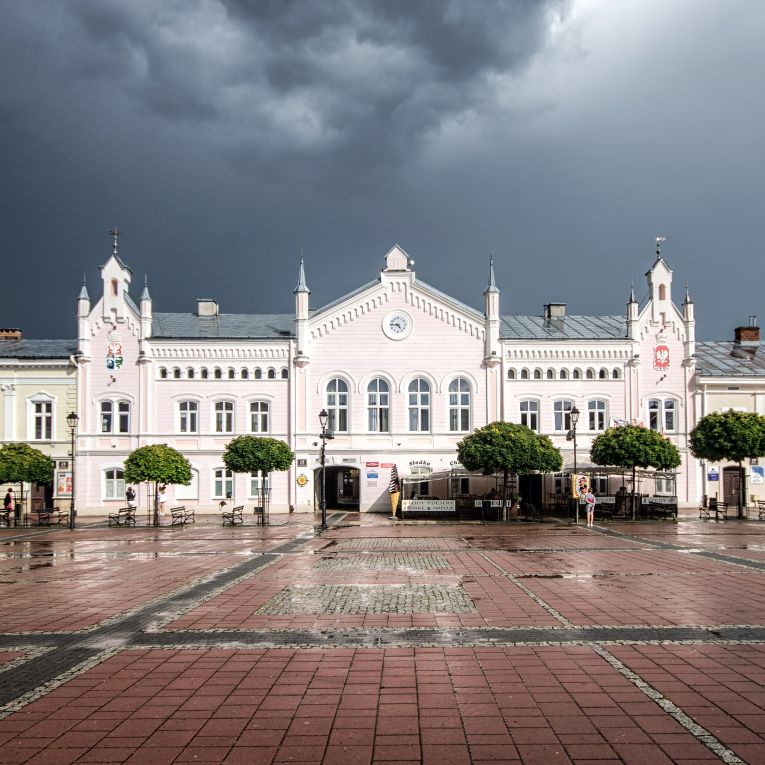







Sanok is one of the most south-eastern Polish urban centers with a developed chemical industry. The Sanok poviat, together with the Krosno poviat, is one of the oldest oil mining centers in the world, a refinery and crude oil mines existed here before 1884.
The city is located in theSan valley, inthe Sanok Valley , at the foot ofthe Słonne Mountains andthe Bukowskie Foothills inthe Carpathian Euroregion . As of January 1, 2013, the area of the city was 38.08 km²
Sanok was founded around the 10th / 11th century. The oldest mention of a stronghold in Sanok comes from 1150 and was written in the Ruthenian Hipacki Chronicle. After this period, for the next several dozen years Sanok was under the protection of the Hungarian Crown and the Hungarian starosts in office there. On January 20, 1339, princeGeorge II of thePiast dynasty granted Sanok and the Germans, Poles, Hungarians and Ruthenians living here the location privilege underthe Magdeburg Law .The founder and the first mayor was a trusted prince - Bartek fromSandomierz .In 1340, by inheritance law, Casimir III the Great owned these lands and incorporated them into his Kingdom
After the death of Władysław Jagiełło, his fourth wife, Queen Zofia Holszańska, known as Sońka, lived in the Sanok castle for many years. In the years 1555–1556, the Hungarian queen Izabela lived in the castle in Sanok. Queen Bona's contribution to the city is evidenced by the inclusion of the coat of arms of Sforza (snake swallowing Saracen) into the coat of arms of the city. The period from the mid-fourteenth to the mid-sixteenth century is considered the most successful in the history of the city. From the fifteenth century to the eighteenth century, the city was the venue of noble courts: land and town courts
As a result of the First Partition of Poland in 1772, Sanok and the Sanok land were occupied by Austria and became part of the Kingdom of Galicia and Lodomeria. As the town was destroyed and the town hall in Sanok was burnt down, the administrative authorities moved the county seat to the castle in Lesko.
Today, the function of the town hall is played by the corner building at the Market Square at No. 1.Originally, the town hall was located at Rynek 16. Both buildings are located opposite each other on the Sanok square.The building consists of two perpendicular walls: one, representative, is the western frontage of the Sanok Market Square, and the other is located at Grodka Street. At the top of the façade, there is an emblem - a yellow, two-headed eagle in a blue field - the historical coat of arms of the Sanok region, currently adopted as the coat of arms of the Sanok poviat.
Holy Trinity Cathedral- the Orthodox parish church in Sanok is a brick building erected in the years 1784–1789 in theclassical style , withbaroque side altars and a fulliconostasis with the 17th-century icon of the Mother of God with the Child. Established acathedral Przemyśl-Nowosądecka diocese in 1983; She performed this function until 2016. In addition to the main altar and the iconostasis, it has atypically two side sacrificial altars. Both are quite individual and symbolize the churches that used to be in Sanok. The first altar on the right is a symbol of the church that stood onthe castle square , the second altar is dedicated to the icon of the Mother of God, which was moved from thechurch of the Nativity of the Mother of God, which was demolished in 1790. The church is located in the vicinity of thecastle, next to the ruins of the city walls.
24h